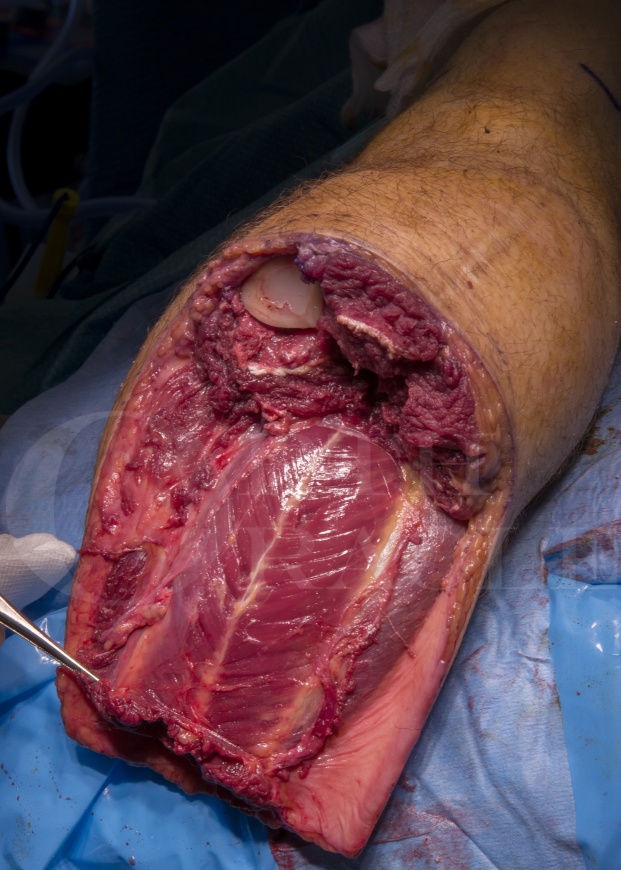Below knee amputation
Overview

Subscribe to get full access to this operation and the extensive Bone & Soft Tissue Tumour Surgery Atlas.
Learn the Below knee amputation surgical technique with step by step instructions on OrthOracle. Our e-learning platform contains high resolution images and a certified CME of the Below knee amputation surgical procedure.
The operation of the below knee amputation is sadly not an infrequent operation in the foot and ankle surgical world . This is particularly the case in practices which are involved in treatment of the diabetic foot and its complications. It is a devastating consequence of metabolic disease, peripheral vascular insufficiency, tumour infection and trauma . It is a procedure which is ablative and has significant ramifications both in the social arena as also to the patient in terms of his physical and psychological disability that can result from it. The incidence though of major amputations seem to be decreasing in the United Kingdom. Diabetics however are at particular risk and six times more likely to have a lower limb amputation than a non-diabetic. In fact about half of all below knee amputations done in the United kingdom are likely to be due to diabetes. The emergence of sport such as mountain biking motorbike racing as well as other high speed sport also has raised the amputation rates for trauma. There are other fringe groups that may require below knee amputation and among them some controversial indications such as Body Dysmorphism Syndrome, Complex regional pain syndrome, and other chronic painful conditions etc. Patients are often driven to seek this option as result of recalcitrant and unbearable pain often of indeterminate origin.. There is evidence to suggest that such patients have a variable response to surgical ablation of their lower limbs with some suffering severe post operative causalgia and phantom pains whilst others enjoying an excellent result. In these patients it is essential to attempt all other forms of treatment before the patient requests an amputation to ensure that the limb cannot be saved by any other methods currently available.
Extensive preparatory work requires to be done to prepare the patient for this life changing operation. This includes assessment by a rehabilitation specialist, a prosthetist, anaesthetic and pain services, physiotherapy , occupational therapy as well as psychologists and psychiatrists. The use of patient forums to illustrate the positive side of life after amputation has significantly enhanced the recovery from this operation in my practice and has made rehabilitation and the impact of psychological trauma easier to cope with. Counselling including cognitive assessment and learning coping techniques preoperatively are also extremely valuable in increasing the overall patient satisfaction. Recent advances in post operative analgesia including indwelling catheters that administer continuous pain relief has significantly reduced the sever phantom limb pains that often plague the patient long after the procedure.
The most important preoperative consideration in non life threatening amputation is the ability of the patient to have a positive attitude about his operation and to be well informed about the consequences of this procedure. It is indeed often a life saving operation and if done for the right indications, after all non-operative algorithms for the treatment of the patients’ symptoms have been exhausted and all preoperative preparations listed above have been complied with and completed.
Author: Kartik Hariharan FRCS.
Institution: Aneuran Bevan University Health Board, Wales.
Clinicians should seek clarification on whether any implant demonstrated is licensed for use in their own country.
In the USA contact: fda.gov
In the UK contact: gov.uk
In the EU contact: ema.europa.eu



















